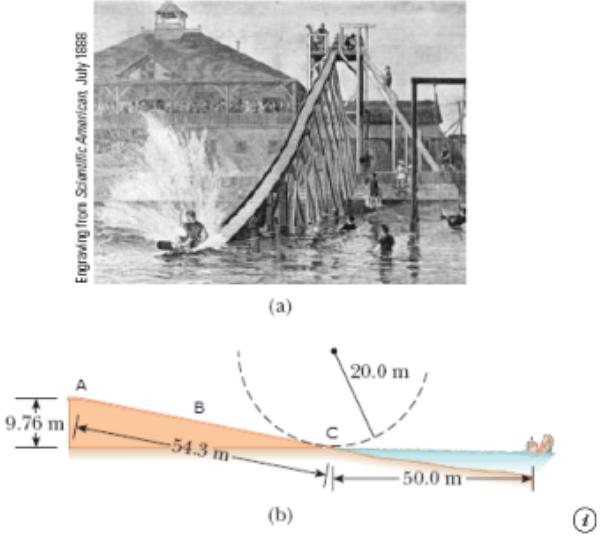Question
Shown below is a waterslide constructed in the late 1800's. This slide was unique for its time due to the fact that a large number
Shown below is a waterslide constructed in the late 1800's. This slide was unique for its time due to the fact that a large number of small wheels along its length made friction negligible. Riders rode a small sled down the chute which ended with a horizontal section that caused the sled and rider to skim across the water much like a flat pebble. The chute was 9.76 m high at the top and 54.3 m long. Consider a rider and sled with a combined mass of 73.5 kg. They are pushed off the top of the slide from point A with a speed of 2.95 m/s,and they skim horizontally across the water a distance of 50 m before coming to rest.

(a) Find the speed (in m/s) of the sled and rider at point C.
(b) Model the force of water friction as a constant retarding force acting on a particle. Find the magnitude (in N) of the friction force the water exerts on the sled.
(c) At point C the chute is horizontal but curving in the vertical plane. Assume its radius of curvature is 20.0 m. Find the force (in N) the chute exerts on the sled at point C.
(a) 20.0 m 9.76 m -54.3 m- 50.0 m (b) Erngraving from Sciantific American July 1868
Step by Step Solution
There are 3 Steps involved in it
Step: 1
a From the workenergy theorem the speed of the sled and ...
Get Instant Access to Expert-Tailored Solutions
See step-by-step solutions with expert insights and AI powered tools for academic success
Step: 2

Step: 3

Ace Your Homework with AI
Get the answers you need in no time with our AI-driven, step-by-step assistance
Get Started


